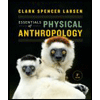Lesson Six Review
docx
keyboard_arrow_up
School
Alabama A&M University *
*We aren’t endorsed by this school
Course
PRESPECTIV
Subject
Anthropology
Date
Apr 3, 2024
Type
docx
Pages
4
Uploaded by SuperHumanEagleMaster1055
Lesson Six Review – Expansion of the World Christian Movement
1. Winter describes two “structures” that are essential for mission. What are their primary purposes? How does Winter use the delayed birth of the Protestant mission movement as an example of the need for both structures? (3 pts)
Modality and Sodality Structures:
There are two primary structures within the church: modality and sodality.
Modality focuses on nurturing and expanding the local church community.
Sodality, on the other hand, aims to support and strengthen mission efforts beyond the local church.
Purpose of Modality and Sodality:
Modality is essential for the growth and sustenance of the church, ensuring its vitality and continuity.
Sodality plays a crucial role in evangelization and spreading the gospel globally, serving as a form of church expansion.
Importance of Both Structures:
The necessity of both structures is emphasized by historical examples.
Without a sodality system for missionary outreach, there was limited geographical Christian growth over several centuries.
Conversely, the enthusiastic response to William Carey's book "An Enquiry" highlights the effectiveness of sodality in igniting zeal for global evangelization.
It's crucial for the modality to uphold Biblical values and actively equip missionaries to provide a
solid foundation for sodality's outreach efforts.
2. What motivated some missionaries to stand up against colonial rulers? Cite one type of injustice that missionaries successfully campaigned against mentioned by Woodberry. (2 pts)
Some missionaries rebelled against colonial rulers because they wanted to teach indigenous people groups.
The idea of racial superiority promoted by anthropologists was one sort of injustice that missionaries successfully campaigned against.
3. List the five advances of the gospel into Asia, where it survived political and religious resistance. What was different about the first and the last advances that made them most effective? (3 pts)
1. Despite the Muslim conquest of Persia and the imposition of restrictions on Christians, such as
limitations on building churches, evangelizing, and intermarrying, Christianity persisted.
2. During the Franciscan-Mongol period, Christianity initially thrived due to the Mongols' religious tolerance and support for the spread of Christianity through figures like John of Monte Corvino. However, as the author notes, the small Catholic communities eventually declined.
3. In the Jesuit era, Christianity endured despite disagreements between the church and the papacy. Missionaries shared the core tenets of Christianity with many local communities without
imposing cultural assimilation. Although local Christian groups faced challenges and opposition from Hindus and Muslims, they managed to survive.
4. Protestant missionaries, while spreading the gospel, often imposed their own cultural norms and practices on local populations in an attempt to improve their lives, albeit with good intentions.
5. Chinese Christian missionaries are actively evangelizing in their communities, building upon Asia's rich history of Christian expansion. The effectiveness of these efforts is attributed to Asians' readiness to engage in cross-cultural missionary work with fellow Asians.
Q4. Classify the following groups as a “modality” or a “sodality.” (4 pts, ½ pt each)
a. Campus Crusade for Christ (S)
b. The synagogue of Nazareth (M)
c. A church planting team sent to a specific location (S)
d. A relief agency (S)
e. Paul’s missionary band (S)
f. The Episcopal Church (M)
g. A monastic order dedicated to study or service (S)
h. A private business (S)
5. Give an example after the biblical period when God advanced His purpose even though His people showed themselves unwilling to be sent as missionaries. (1 pt)
The Vikings, who initially attacked Christian Europe, eventually embraced Christianity as a result of their violent interactions
.
6. Using the example of Robert de Nobili in India or that of Matteo Ricci in China, describe the strategy employed to communicate the Christian message in the 17th century. Were people responsive to their methods? Why? (2 pts)
In the 17th century, the method employed to convey the Christian message involved comprehending the local culture and presenting Catholic teachings in a manner that avoided unnecessary offense (Sunquist 242). By preaching the fundamentals of the gospel while respecting local customs, missionaries aimed to propagate their beliefs within the culture. This approach facilitated the establishment of churches within local communities and garnered receptivity from individuals across different social strata. Importantly, it allowed local Christians
to maintain their cultural identity while embracing Christianity.
7. For each of the following situations listed below, determine whether the following person(s) were acting voluntarily (V) or involuntarily (I), and also whether they were coming (C) or going (G) as part of God’s mission purposes. Select IG, IC, VG, or VC. (4 pts, ½ pt each)
a. Daniel (Babylon) IG
b. Ruth (Israel) VC
c. Goths (Romans) VC
d. Boniface (Germanic tribes) VG
e. Ramon Lull (Muslims) VG
f. Nestorian traders from Assyria (China, India) VG
g. African Slaves (North America) IC
h. International Students living in North America VC
8. Where missionaries have had the liberty to work over periods of time, measures of human flourishing (literacy, economic development, life-expectancy, etc.) tend to _______________. (1 pt)
a. disappear when missionaries leave
b. correspond to climate conditions and government stability
c. remain greater in those cultures
d. be sustained only for Christians
Your preview ends here
Eager to read complete document? Join bartleby learn and gain access to the full version
- Access to all documents
- Unlimited textbook solutions
- 24/7 expert homework help
e. improve in the countries sending the missionaries
Ans; remain greater in those cultures
Related Documents
Recommended textbooks for you

Essentials of Physical Anthropology (Third Editio...
Anthropology
ISBN:9780393938661
Author:Clark Spencer Larsen
Publisher:W. W. Norton & Company
Recommended textbooks for you
 Essentials of Physical Anthropology (Third Editio...AnthropologyISBN:9780393938661Author:Clark Spencer LarsenPublisher:W. W. Norton & Company
Essentials of Physical Anthropology (Third Editio...AnthropologyISBN:9780393938661Author:Clark Spencer LarsenPublisher:W. W. Norton & Company

Essentials of Physical Anthropology (Third Editio...
Anthropology
ISBN:9780393938661
Author:Clark Spencer Larsen
Publisher:W. W. Norton & Company